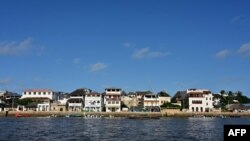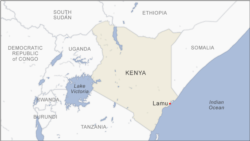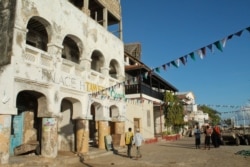Kenya's island of Lamu, a UNESCO World Heritage site, is under threat, activists say.
Authorities are constructing major projects on the mainland, including a port and an oil pipeline. They also hope to build the region's first coal-fired power plant. While the infrastructure is likely to boost the local economy, some Lamu residents worry the development and a flood of outsiders will affect the local culture — and the architecture, which some say is already falling apart.
"We are doing our best to prevent that kind of intervention and new developments, so that we can preserve the Lamu," said Abu Bakr Badawi, who is with the century-old Riyadha Mosque.
The remoteness of the island, where cars don't fit on the narrow streets and donkeys are the main mode of transport, has helped maintain its 650-year-old Swahili culture and traditions.
But authorities say the $26 billion group of projects will improve economic links between Kenya, South Sudan and Ethiopia, and create thousands of jobs.
A Kenyan court in June, however, halted construction of a coal-fired power plant that was to help fuel the projects, encouraging opponents.
"We as Lamu people are afraid because when people come from other areas, they come with many things," said Raya Famau Ahmed, an activist opposed to the coal plant. "Their own language, their own culture, their own way of living. And this might alter the cultural way people have been living."
Lamu authorities vow to protect the island's world heritage status from the development projects.
However, activists worry the changes could affect the town's unique, antique character. More than a third of Lamu's historic buildings are already falling apart, says Athman Hussein of the National Museums of Kenya.
"Some of the owners don't want any kind of intervention," Hussein said. "They think perhaps by putting money into their building, you are actually owning it; you are taking over a particular building. So, it's a complex kind of thing."
Lamu authorities say they are raising funds to help renovate historic buildings and develop the economy, with tourism as a major pillar.
At the risk of commercializing their culture, some argue that bringing in more tourists may actually help keep Lamu's unique traditions alive.







